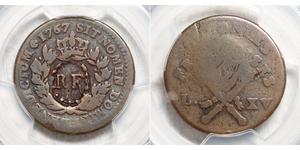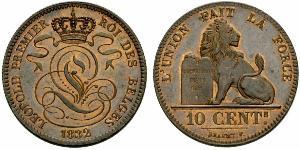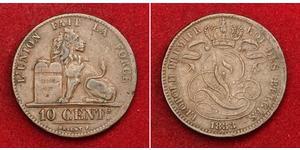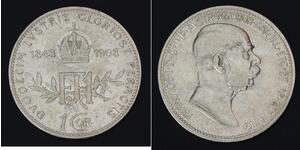[ 4557] Philip I 'the Arab' - Roman Emperor: 244-249 A.D. - Bronze 'Sestertius' (28mm, 16.15 gm.) from Year 9 of the founding of Viminacium = ANVIIII = 248 A.D. IMP M IVL PHILIPPVS AVG, laureate, draped & curiassed bust right. P M S COL VIM, Moesia standing left between bull & lion, AN VIIII in ex. * Numismatic Note: The bull and the lion represent the seventh Claudian legion stationed at the city. Provided with certificate of authenticity. CERTIFIED AUTHENTIC by Sergey Nechayev, PhD - Numismatic Expert Legio septima Claudia Pia Fidelis (Seventh Claudian Legion) was a Roman legion. Its emblem, as well as of all Caesar's legions, was the bull, together with the lion.[citation needed] The 7th, along with the 6th, 8th & 9th were all founded by Pompey in Spain in 65 BC. They were ordered to Cisalpine Gaul around 58 BC by Julius Caesar, and marched with him throughout the entire Gallic Wars. Legio VII was one of the two legions used in Caesar's invasions of Britain, and played a crucial role in The Battle of Pharsalus in 48 BC, and it existed at least until the end of the 4th century, guarding middle Danube. Tiberius Claudius Maximus the Roman soldier who brought the head of Decebalus to emperor Trajan was serving in Legio VII Claudia. Map of the Roman empire in AD 125, under emperor HadrianLegio VII Claudia, stationed on the river Danube at Viminacium (Kostolac, Serbia), in Moesia Superior province, from AD 58 until the 4th century Viminacium was a major city of the Romanann province of Moesia (today's Serbia), and the capital of Moesia Superior. Viminacium was the base camp of Legio VII Claudia, and hosted for some time the IIII Flavia Felix. It was destroyed in 440 by the Huns, but rebuilt by Justinian I. During Maurice’s Balkan campaigns, Viminacium saw destruction by the Avars in 584 and a crushing defeat of Avar forces on the northern Danube bank in 599, destroying Avar reputation for invincibility. Today Kostolac, a small Serbian town on the Danube river, is located where Viminacium used to be. Marcus Julius Philippus or Philippus I Arabs (c. 204–249), known inEnglish as Philip the Arab or formerly (prior to World War II) in English asPhilip the Arabian, was a Roman Emperor from 244 to 249. Early life Little is known about Philip's early life and political career. He was born inShahba, about 55 miles southeast of Damascus, in the Roman province ofSyria. Philip has the nickname "the Arab" because he had family who had originated in the Arabian peninsula, believed to be distant descendants of the prestigious Baleed family of Aleppo. Philip was the son of a Julius Marinus, a local Roman citizen, possibly of some importance. Many historians[1][2][3]agree that he was of Arab descent who gained Roman citizenship through his father, a man of considerable influence. Many citizens from the provinces took Roman names upon acquiring citizenship. This makes tracing his Arabic blood line difficult. However, it is documented that Rome used the Ghassan tribe from the Azd of Yemen as vassals to keep the neighboring northern Arabs in check. The name of Philip's mother is unknown, but sources refer to a brother, Gaius Julius Priscus, a member of the Praetorian guard under Gordian III (238–244). In 234, Philip married Marcia Otacilia Severa, daughter of a Roman Governor. They had two children: a son named Marcus Julius Philippus Severus (Philippus II) in 238 and according to numismatic evidence they had a daughter called Julia Severa or Severina, whom the ancient Roman sources don't mention. Philip became a member of the Pretorian Guard during the reign of the emperor Alexander Severus, who was a Syrian. In ancient Rome the Pretorian Guard was closely associated with the emperor, serving among other things as the emperor's bodyguard. Political career In 243, during Gordian III's campaign against Shapur I of Persia, the Praetorian prefect Timesitheus died under unclear circumstances. At the suggestion ...
type to read more

|
Posted by:
anonymous 2015-08-18 |
Similar Coin Groups
2025-05-29
- New coin is added to 10 Centime Belgium Copper Leopold I of Belgium (1790-1865)
10 Centime Belgium Copper Leopold I of Belgium (1790-1865)
group has 8 coins / 8 prices
⇑
1833, Kingdom of Belgium, Leopold I. Scarce & Large Copper 10 Centimes Coin. VF Mint Year: 1833 Condition: An average VF! Denomination: 10 Centimes Reference: KM-2.1 ($170 in VF!). We ...
2025-05-23
- New coin is added to 1 Corona Austria-Hungary (1867-1918) Silver Franz Joseph I ( ...
1 Corona Austria-Hungary (1867-1918) Silver Franz Joseph I ( ...
group has 25 coins / 17 prices
⇑
AUSTRIA 1 Corona ND(1908) - Silver 0.835 - 60th Ann. of Reign - VF - 1338
You may be interested in ...
















-300-150-AeIKqUpY7NEAAAFhroEy54Nz.jpg)






